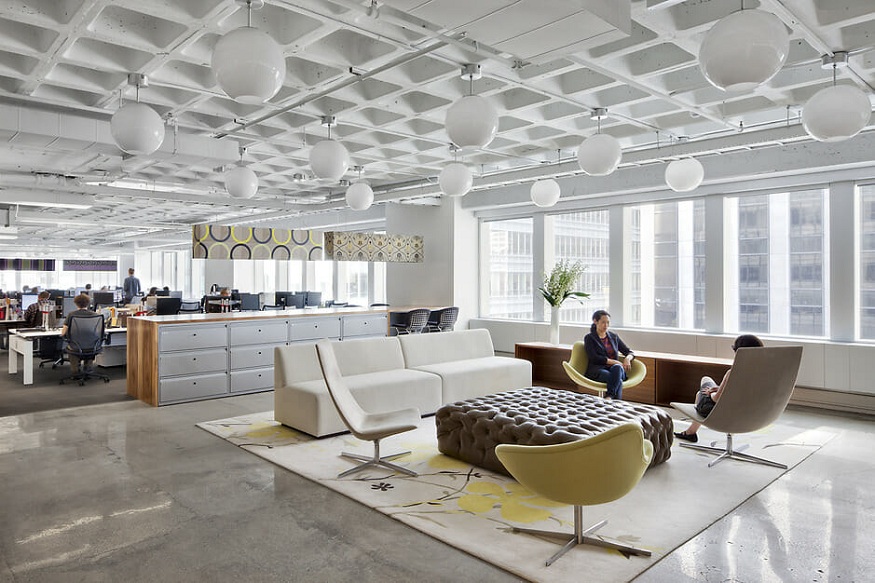As the city was growing fast, the interior design companies were exploring a completely different environment, and they needed to balance sensitivity and high client demands. The Dubai interior design sector has its project management practice because of the satisfaction of the needs of this global metropolis. In this emirate, interior design firms have developed sophisticated ways to produce top-notch results in any area, from private palaces to commercial megaprojects, in a setting where good quality is more than demanded.
Because of the real estate market and ongoing construction boom in Dubai, the city has become a center of expertise for interior design, attracting talent from all over the world. Now, in the present innovation era, the convergence of creative minds has made effective project management the deciding factor between success and mediocrity. Managing interior design in Dubai entails more than just being artistic: it requires going through the tortuous legal systems of the region and working through the regional logistical details and cultural peculiarities.
Customer Relationship Management in the Design Sector in Dubai
First, successful interior design management in Dubai requires building solid client relationships. The companies in this industry know that foreign investors and Emirati clientele require both individualized care and the best service. As a rule, to attract new clients, interior design firms utilize deep consultations and complex presentations for the process of winning new customers as they involve themselves in local nuances as well as an overview of trends.
Dubai offers an incredible cultural mix, due to which interior design companies should be able to share ideas with the various target groups. A successful project manager utilizes cultural knowledge in the way of negotiating between Asian investors, Western expatriates, and conventional Emirati customers who do not hold similar expectations. Understanding various communication techniques, decision-making procedures, and aesthetic preferences are all part of this cultural fluency.
Interior design companies use advanced client management systems after building partnerships. It becomes commonplace to conduct in-person meetings in opulent office settings, provide regular updates via digital platforms, and carefully record customer preferences. Dubai’s wealthy clientele frequently demands 24-hour availability, which forces interior design management teams to create responsive communication procedures that balance privacy and urgency.
Preliminary Conceptualization and Planning Procedure
When interior design companies land a job in Dubai, they start a thorough planning process that takes into consideration the particularities of the city. This calls for a careful examination of the site, which may take into account the harsh desert climate, pre-existing architectural features, and available space. Unlike in most projects, project managers organize interdisciplinary teams before conceptual development starts to collect the pertinent data.
Most interior design companies will also pool together professionals from different fields, from lighting consultants to acoustic engineers and sustainability specialists to cultural advisors, to work on conception together. With enough breadth, the optimal designs will maintain respect for local cultural settings and perform as well as possible in the surroundings of Dubai.
Handling Compliance and Regulatory Requirements
The most important part of the project is managing an interior design project in Dubai and navigating the complicated regulatory environment. There may be several stakeholders involved at different points in the complex approval process for design plans. Building trusting relationships with regulatory authorities and being aware of the subtleties of the clearance process is essential for effective interior design management in Dubai. To save time and money, firms frequently arrange pre-submission consultations to find possible compliance issues before formal submission.
Techniques for Cost Control and Budget Management
Budget management is made more difficult by the luxury market that rules Dubai’s interior design scene. Even though budgets are considerable when compared to other markets, smart cost control measures are necessary to meet client expectations for exceptional results. Multi-tier budgeting techniques, which divide necessary components from enhancing features, are used by interior design businesses to provide flexibility as projects move forward.
Since procurement accounts for a sizable amount of project expenses, interior design management in Dubai has developed specific procurement techniques. These usually entail upholding varied supply networks that include regional producers, global luxury brands, and local craftspeople. Successful project managers make use of Dubai’s status as a major international commercial hub to secure advantageous terms while maintaining material authenticity and quality assurance.
Financial tracking systems used by Dubai-based interior design companies frequently include backup plans for market-specific factors such as seasonal labor availability and currency variations that impact imported goods. Proactive intervention is made possible by sophisticated software systems that enable real-time budget monitoring and early warning signals when particular expense categories draw close to predetermined levels.
Logistics and Supply Chain Management
For interior design companies overseeing projects in the emirate, Dubai’s geographic location presents both benefits and difficulties. Despite the city’s great connectivity and status as a major worldwide port, considerable logistics preparation is necessary for the importation of specialty materials and custom furnishings. The possibility of delays at any stage of this chain necessitates careful contingency planning, which includes finding substitute suppliers and short-term fixes to keep the project moving forward.
Site management and construction coordination
The execution stage of interior design projects in Dubai entails working with several contractors and building professionals in a setting where communication styles and labor practices may be very different from those in the West. Clear hierarchies and responsibility matrices that take into consideration the cultural dynamics of multinational work teams are established by successful interior design organizations.
Due to the harsh weather in Dubai, especially during the summer months when temperatures frequently surpass 40°C (104°F), site management calls for extra attention to health and safety procedures. Project managers for interior design put in place necessary breaks, rotation schedules, and hydration guidelines that adhere to legal requirements while preserving output.
Using standardized assessment instruments, frequent site inspections are part of quality control during the building process. In order to ensure that design purpose is faithfully translated into physical reality despite communication difficulties, interior design management in dubai frequently entails creating visual reference posts that overcome any language hurdles among global work teams.
Using Technology in Project Management
The interior design industry in Dubai is highly competitive, which has sped up the adoption of technology in all project management domains. Prominent interior design companies make investments in Building Information Modeling (BIM) systems that facilitate improved visualization, the identification of conflicts, and cooperative design creation. Clients may now experience spaces before construction starts thanks to virtual reality presentations, which are already commonplace.
For post-completion services, such as digital maintenance manuals and documentation for smart home integration, interior design management in Dubai also makes use of technology. By using technology, businesses are positioned as full-service providers rather than one-time contractors, strengthening the client relationship beyond project completion.
Conclusion:
Interior design companies working in the emirate must constantly improve their project management techniques as Dubai continues on its ambitious development trajectory. Innovation in the planning and execution of design projects has been encouraged by the special fusion of cultural diversity, regulatory complexity, and luxury aspirations. In Dubai, interior design management is a specialist area that strikes a compromise between meticulous execution procedures and creative quality.
The most prosperous interior design companies understand that in this market, project management calls for technological know-how, cultural sensitivity, and flexibility. These companies greatly enhance the emirate’s standing as a world-renowned design destination by creating systems that tackle the unique difficulties of the Dubai environment while producing outstanding design results. The advanced project management techniques that support the city’s interior design sector will also change as it does.




